The Secret to Growing the World’s Largest Pumpkin
From special seeds to helpful fungi, creating a monster takes more than just sunlight and soil
/https://tf-cmsv2-smithsonianmag-media.s3.amazonaws.com/filer/a9/55/a955c4a0-e94a-443f-981c-0bf0c8a4e14a/giantpumpkin1.jpg)
Waiting in line for their weigh-in, the lumpy, pale pumpkins sag on their pallets like deflated balloons. But to become a world heavyweight champion, looks don’t really matter. When it comes to this competition, decades of intense selective breeding have banished the petite, perfectly ovoid and brilliantly orange fruits with a focus on one exclusive trait: massive size.
Every year, an international community of giant-pumpkin farmers loads up beastly gourds on trailers, carting them to local fairs and weigh-ins for a chance at the title.
The size of these pumpkins is unimaginably large to me—I can barely grow tomatoes without making heart-breaking tears through their delicate flesh, innards dripping to the ground. So I went to scientists and competitive pumpkin growers to ask this burning question: How do you make a monster pumpkin?
The current world record is held by Beni Meier, a Swiss accountant by day, who grew a pumpkin that weighs in at 2,323.7 pounds, roughly the same amount as a small car. But it’s likely he won’t hold that title long. These giants have been growing in mass by leaps and bounds every year, and there are no signs that they’re slowing down.
“The weight is still continuing to go up ... 1,000 pounds was the goal 15 years ago, and everyone thought that was unheard of,” says Woody Lancaster, a competitive pumpkin grower and so-called heavy hitter, or someone who consistently churns out monsters. His 1,954-pounder ranked 14th in the world this year.
According to Lancaster and other growers, there are a few basic tenants to cultivating giant pumpkins: Keep them at the perfect temperature, give them continuous food and water, protect their delicate skins from drying and cracking and cover them at night for warmth. Competitive growers also lovingly prune their pumpkin plants, reducing their fruit to a few prized gems. But above all, you have to start with a champion seed.
George Hamilton, extension field specialist in fruits and vegetables at the University of New Hampshire, ranks the relative importance of a grower's checklist something like this: “Number one is genetics, number two is genetics, number three is genetics. And then number four you’ve got sun, warmth, fertilizer and water,” he says.
These days, nearly every prizewinning pumpkin can trace its roots back to Howard Dill’s Atlantic Giant. Dill spent 30 careful years cultivating his beasts from the Mammoth pumpkin varieties, which are rooted in the squash species Cucurbita maxima.
In 1981, Dill scored a world record with a 493.5-pound beast, trampling the previous record of 460 pounds. He patented the seeds, and an international cohort of growers continued to selectively breed them for bigger pumpkins.
Just under 35 years later, the weight record for the pumpkins has more than quadrupled.
"Basically it's like horse racing. We’re breeding big pumpkins into big pumpkins every year to create bigger pumpkins," says Ron Wallace, another heavy hitter who holds multiple growing titles. Last week, Wallace broke the North American weight record with his 2,230-pound behemoth.

So why can these monsters grow so large? Atlantic Giant pumpkins can pack on close to 50 pounds a day during peak growing season, says plant physiologist Jessica Savage at the Arnold Arboretum at Harvard University. Though a pumpkin is roughly 90 percent water, there is still a great deal of sugar flowing into the plant’s bulk.
Oddly enough, the giant plants aren’t any better at producing sugar than their regular-sized cousins, explains Savage. They’re just better at moving it around.
To take you back to high school biology, plants have two types of tissue that work to get food and water flowing through them: xylem and phloem. The xylem transports water into the plants, and the phloem is responsible for sugar movement. While all pumpkins easily move large amounts of water, Savage found that giant pumpkins have supersized phloem.
Growers have also harnessed the power of mycorrhizal fungi, which happily colonize the plant’s roots and assist water and nutrients flowing into the plant in exchange for carbohydrates, explains Wallace, who originally introduced the fungi to extreme gardeners. With increasing demand for his special fungi-containing elixirs, Wallace started selling the mixes this past February, and business is booming.
So is there a biological factor that will eventually limit their size?
Not really. These monsters are so good at moving sugars, that given the proper conditions, there isn't anything glaring that limits their growth, says Savage. "It seems like everything in the plant just increased with the fruit size."
Another grower, Matt DeBacco, suggests that the limit may be in the cells. Plants get large in two stages. First they divide and multiply their cells, then the cells begin expanding. Each individual cell can expand up to a thousand times its original size, so if the pumpkin has more cells to start with, it can expand much faster in the late season, when growth often becomes sluggish, DeBacco explains.
DeBacco, dubbed “mad scientist Matt” by his local community, is currently tinkering with a brew of hormones and amino acids to prolong the initial period of cell growth. Already his method has produced gourds estimated to weigh over 2,000 pounds, and he thinks there may still be room for some tinkering.
“I think that is the last thing that we try before we actually sequence them and change the G’s, the A’s, the T’s and the C’s,” says DeBacco, referring to the chemical base pairs that make up DNA.
In the end, the limit may come down to physics. Giant pumpkins already sag under their own weight, developing heart-wrenching cracks if they grow too quickly or unevenly. But the sagging may actually be one of the keys to continued growth, according to researched published in the International Journal of Non-Linear Mechanics.
Lead author David Hu and his team used vices to test how much force some ill-fated pumpkins could withstand. They discovered that round pumpkins could put up with a lot. Based on these tests, they estimated that a perfectly uniform pumpkin could grow up to a whopping 20,000 pounds. As the pumpkins flatten, things get more complicated, but flattening does seem to help the gourds hold up their massive bulk without cracking.
So although we might not ever have pumpkins big enough to serve as chariots, we already have some large enough for boat rides, and maybe they’ll keep expanding horizontally. The extreme gardeners will just have to go on growing their massive gourds to find out.
/https://tf-cmsv2-smithsonianmag-media.s3.amazonaws.com/accounts/headshot/Wei-Haas_Maya_Headshot-v2.png)
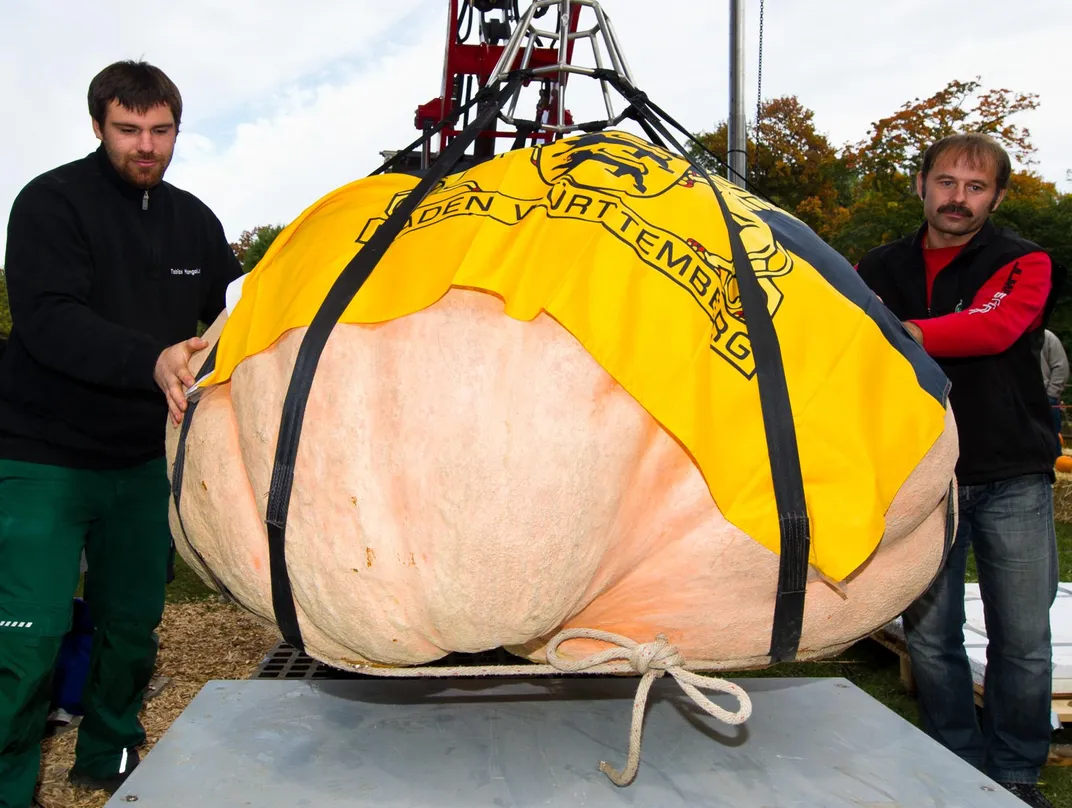
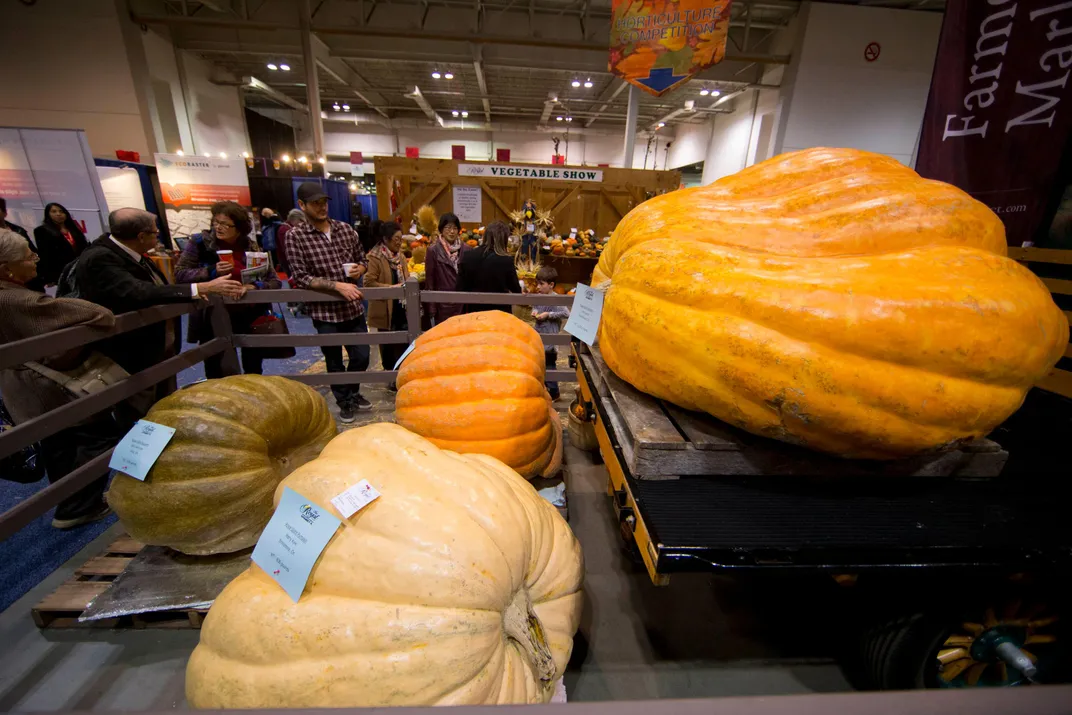
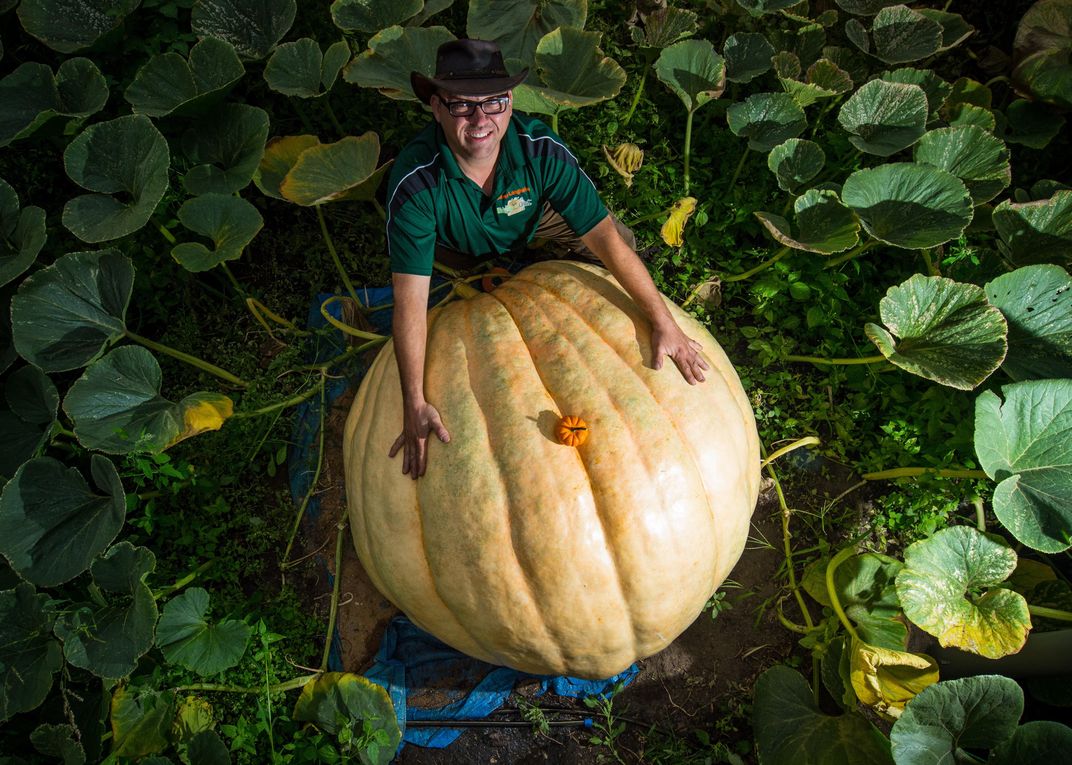

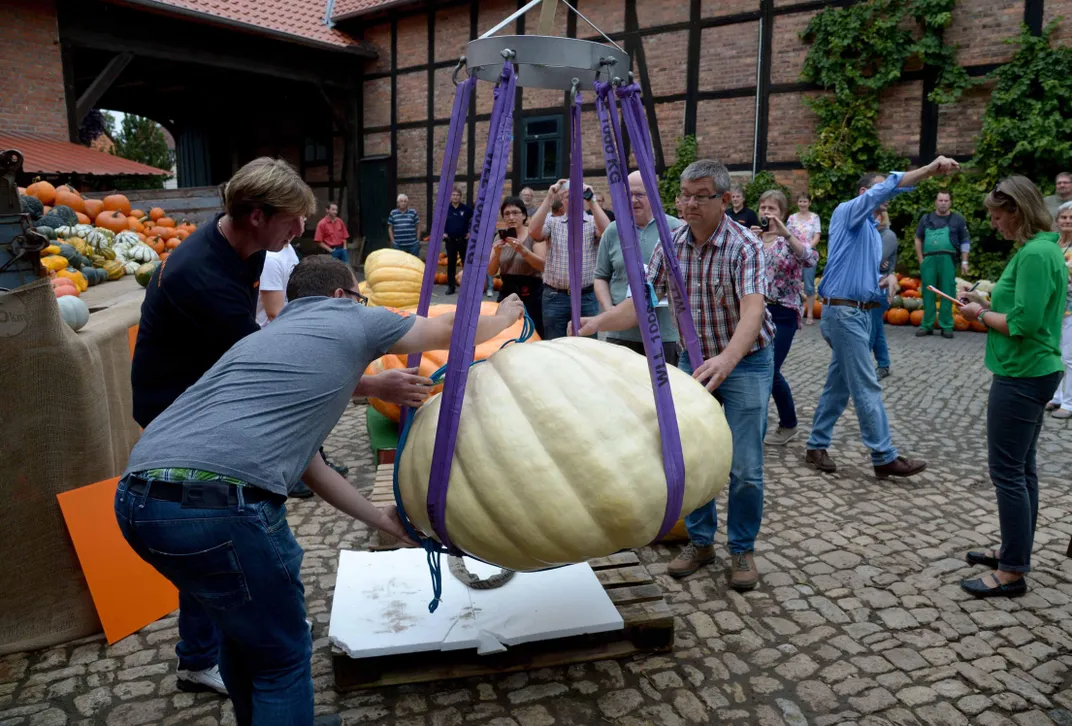
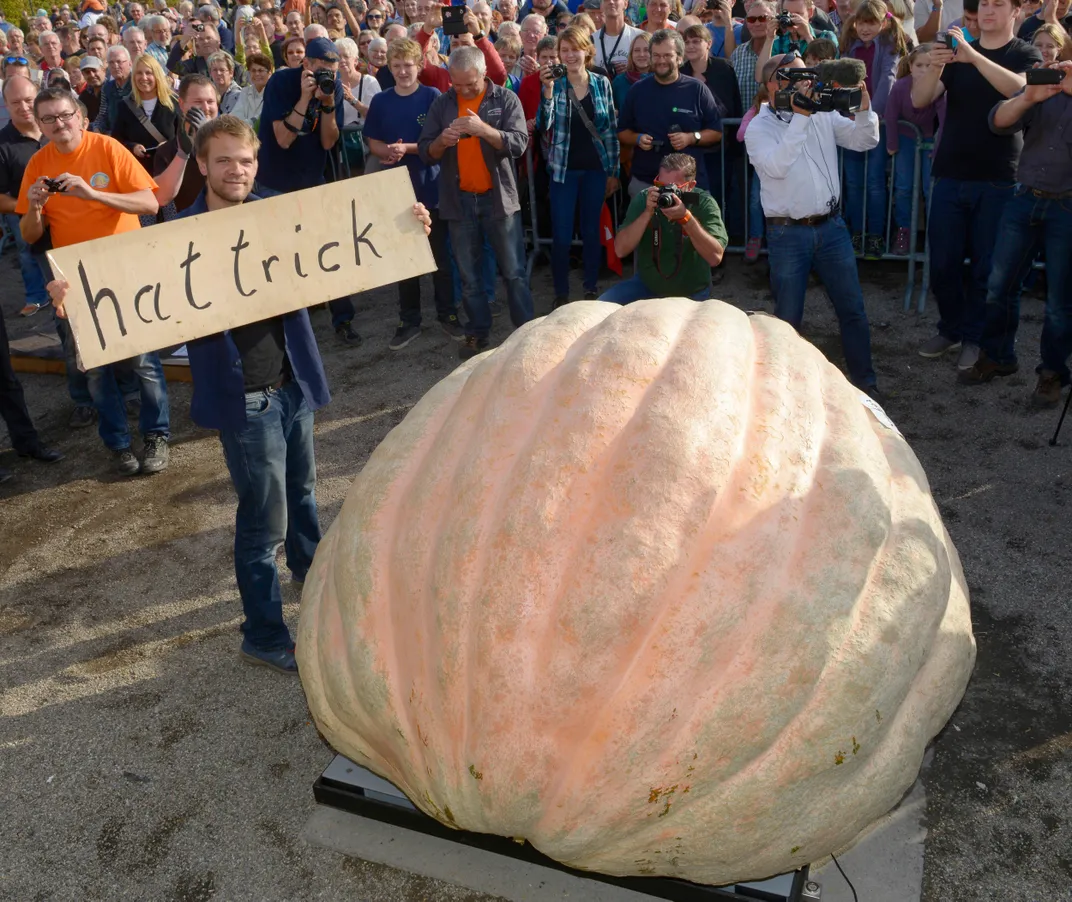
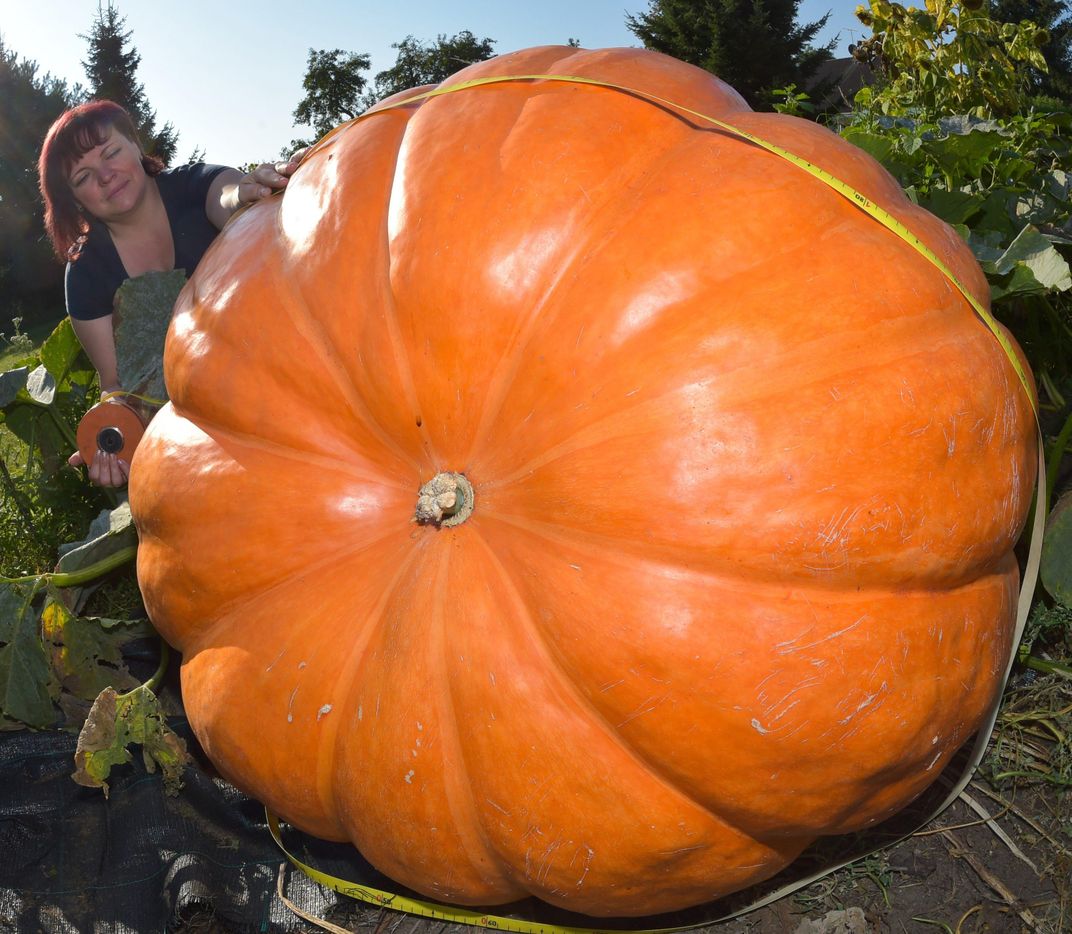
/https://tf-cmsv2-smithsonianmag-media.s3.amazonaws.com/accounts/headshot/Wei-Haas_Maya_Headshot-v2.png)